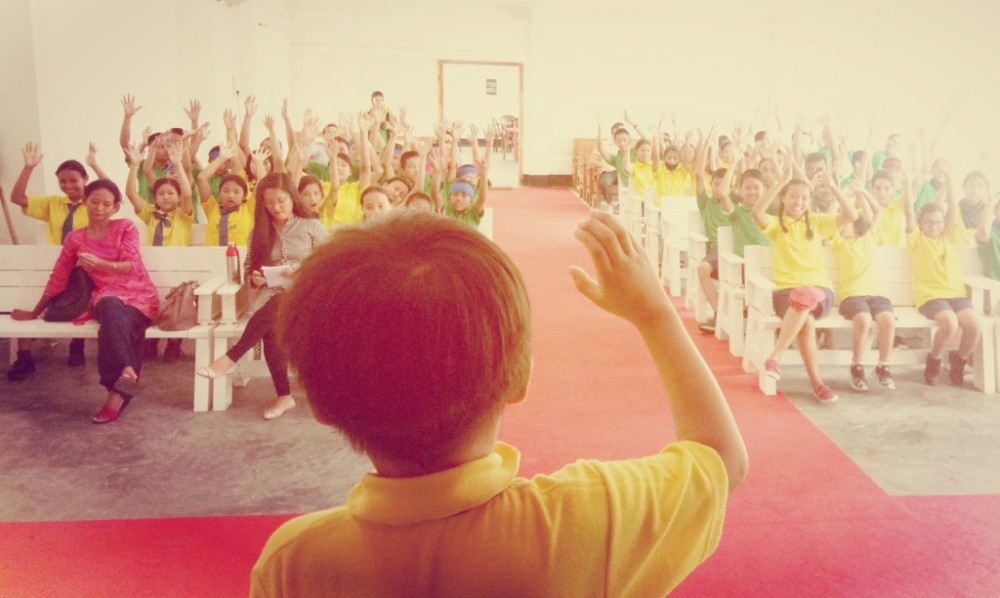Deaf students give a silent applause on International Week of Deaf People, 2019

International Week of Deaf People: Day-4
Christina Walling-Zhimomi
Audiologist & Speech Language Pathologist
Doorbell with lights: In hearing households, visitors ring the doorbell to alert the host of their presence. But how will that work if the hosts are deaf? They have a simple solution: they fit the doorbell with a light that flashes when the doorbell is pressed. The Deaf host sees the light flash and know that somebody is at the door.

The cartoons drawn by Vethi, Cl-10 student of Deaf Biblical Ministry
Look at face, not hands when communicating in Sign Language: One mistake that the hearing make while learning sign language is that they focus on the hands rather than on the face of the signer. When the Deaf communicate, they look at the signer’s face and maintain eye contact. Facial expression is a very important grammatical aspect of sign language, and it plays a vital role in conveying the message. So, as opposed to the assumption that people look at the hands of signers, it is actually the face they look at. The peripheral vision picks up the hand movements and thus they get a complete picture of what the signer is saying. So, next time you try a hand at sign language, try to focus on the face rather than on the hands.
The Deaf know when you are talking about them: The Deaf may not hear what is going on around them. But they are very good at picking up subtle signals, facial expressions and body language of the speakers. No matter how much the hearing speaker tries to mask the fact that they are talking about the Deaf individual, the Deaf are most often able to perceive that the person is talking about them. Just as it is rude to talk about a hearing person in their presence, the hearing should also not do the same with the Deaf in their presence.
To look at the Deaf “speaker” or the interpreter? You may find yourself in a situation where you are interacting with a Deaf person through their interpreter. And you may be confused about whom to look at while talking to them or asking them questions. The correct way is to look at the Deaf person as you talk to them. After you say what you have to say, they will look at the interpreter who will interpret what you have said to them. The Deaf person will reply by signing to you which the interpreter will interpret for you. As the interpreter speaks, keep looking at the Deaf speaker because he/she is the primary focus of your conversation and not the interpreter.
“Silent applause” – A different way of clapping hands: The Deaf do not clap the way the hearing do. Theirs is a visual language and the sound of clapping hands mean nothing to them. Also, some people may clap with their hands down or on their laps, which may be difficult to see. So, the Deaf clap by raising the arms above their heads and shaking the hands in the air (by moving the palms inside and out). It is a universal language in all the Deaf communities around the world.




